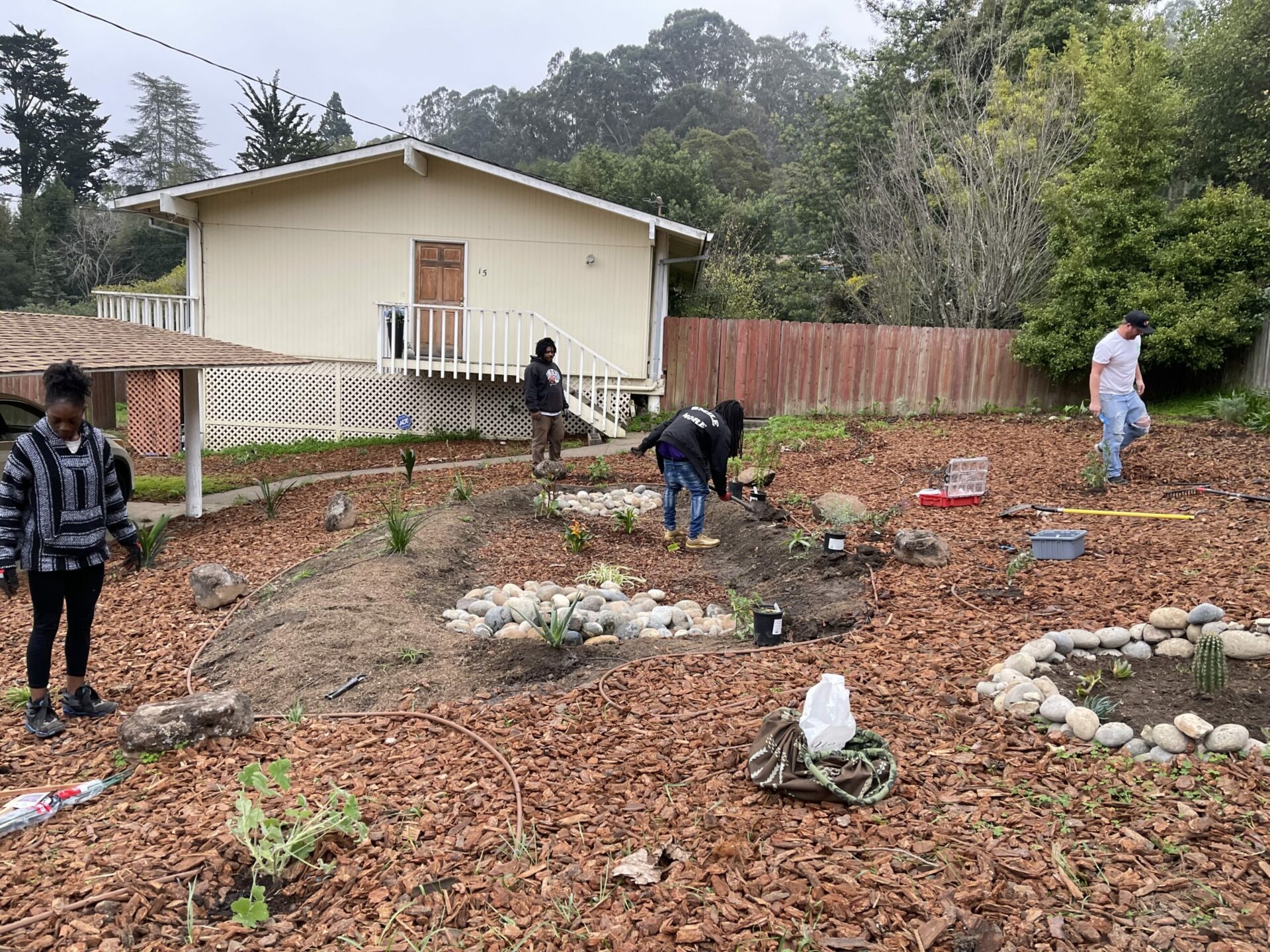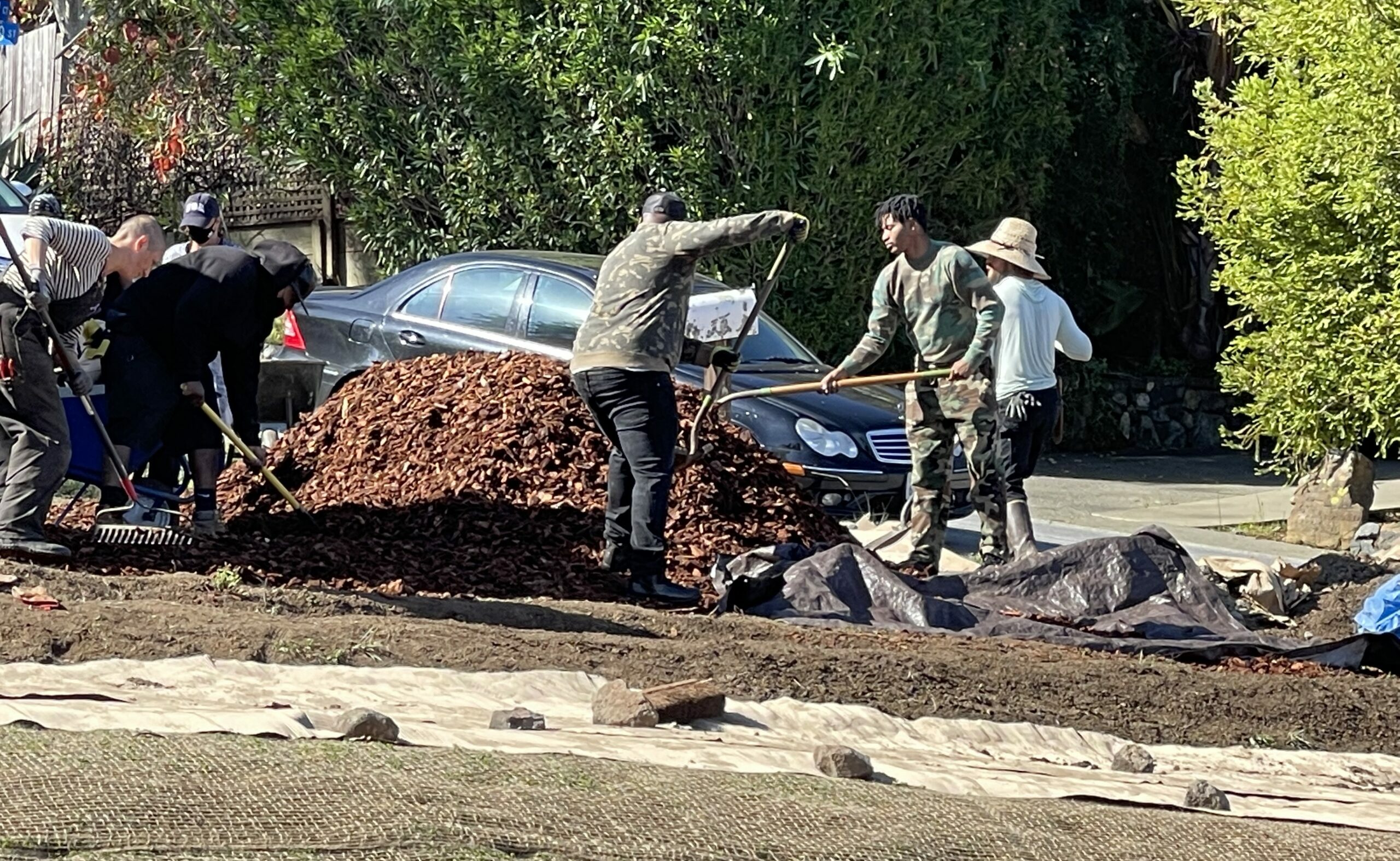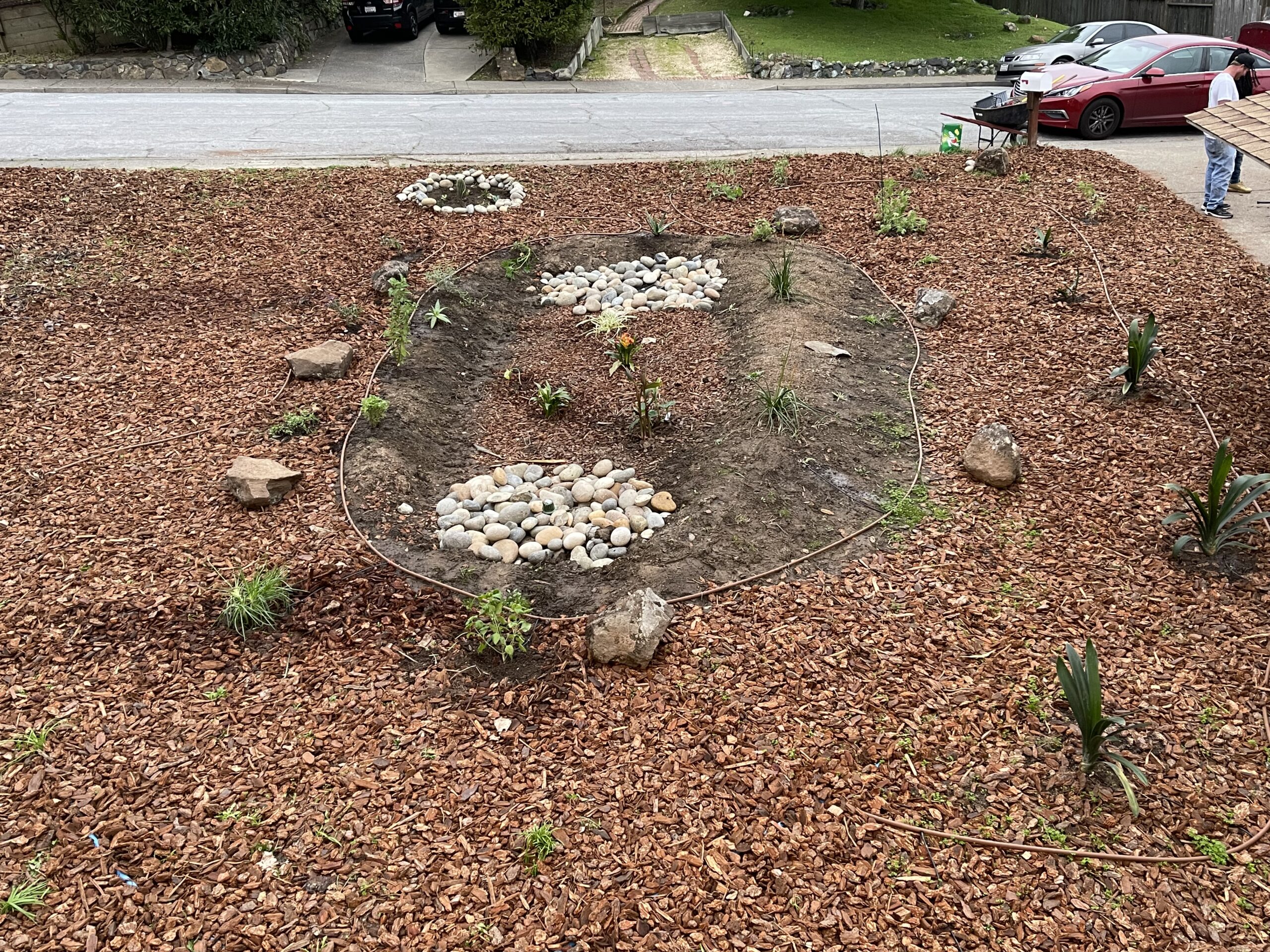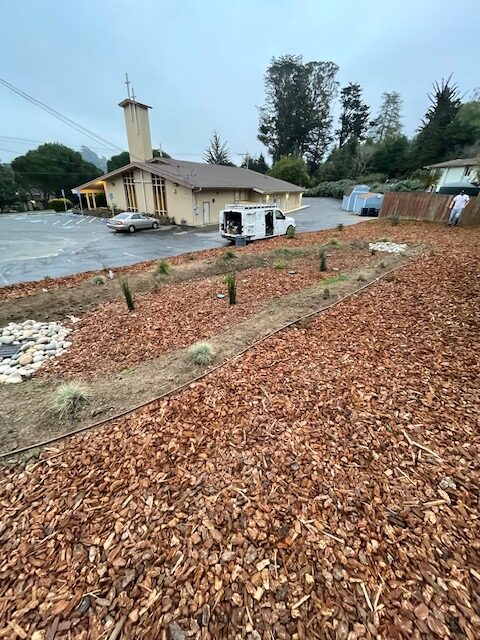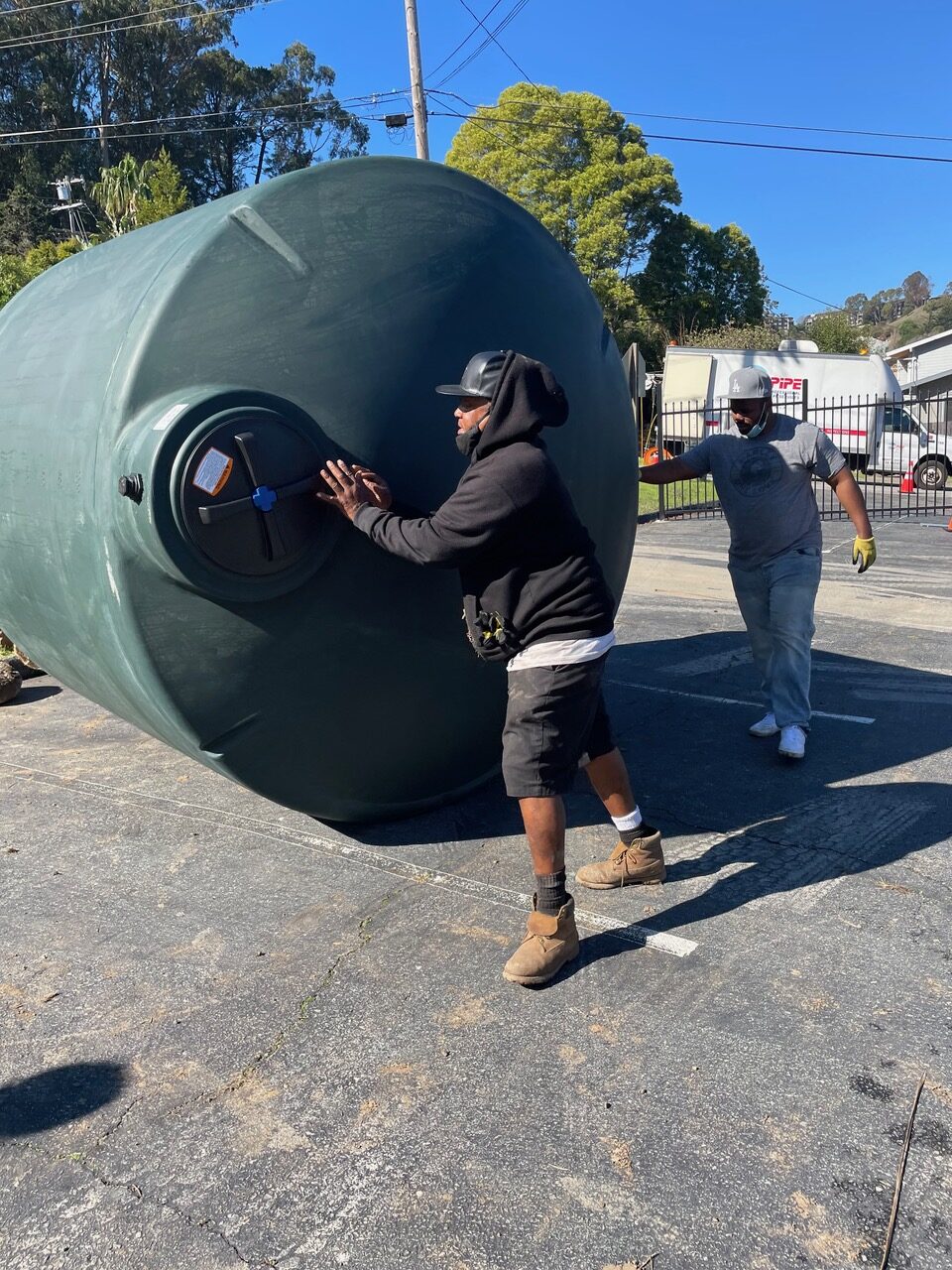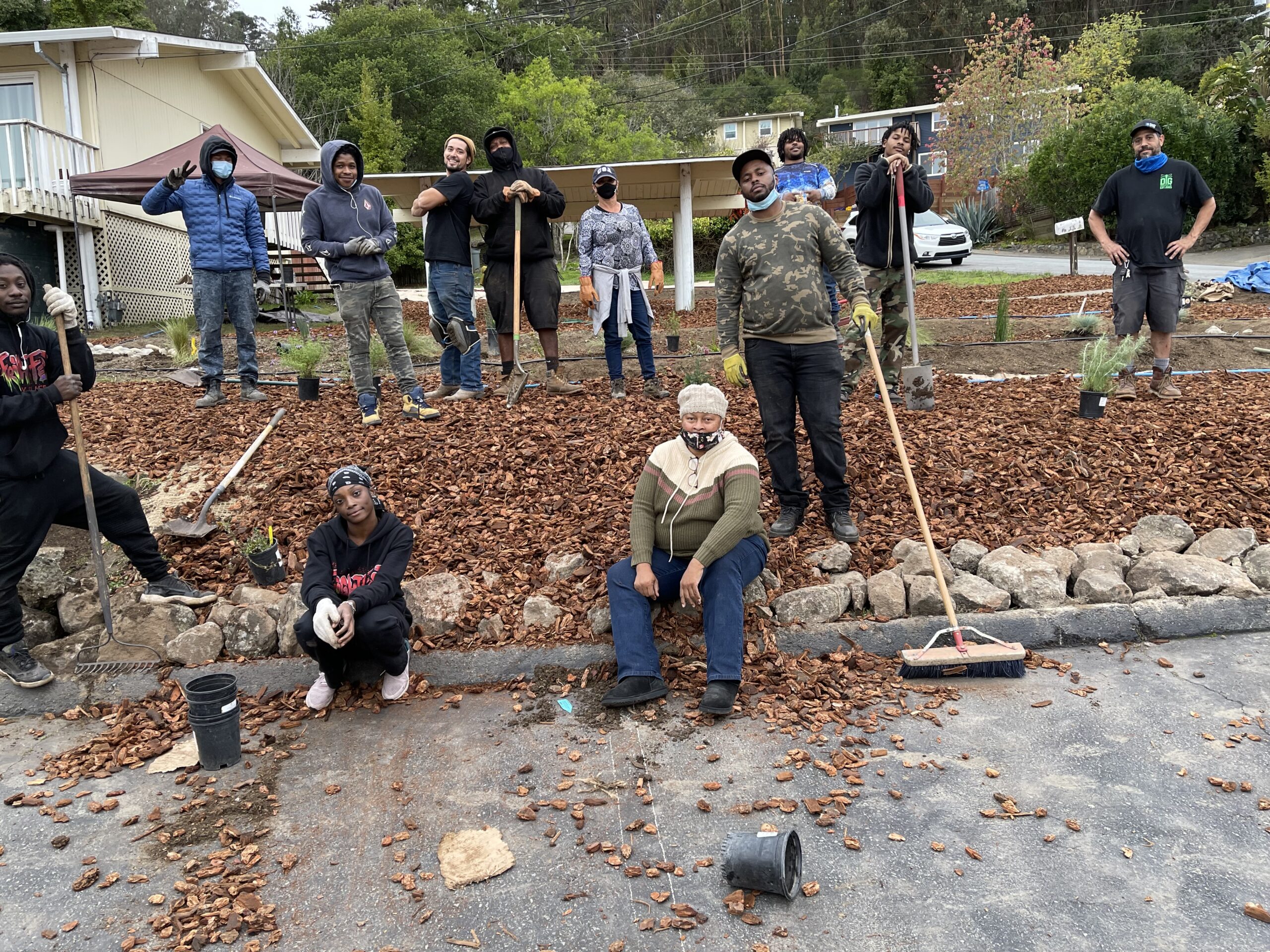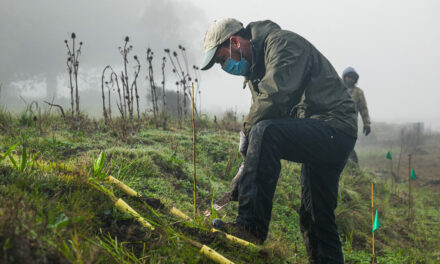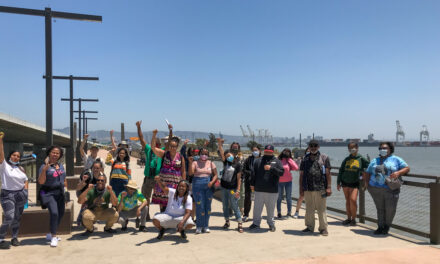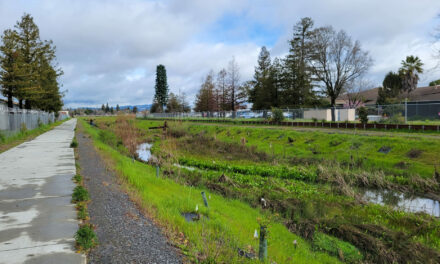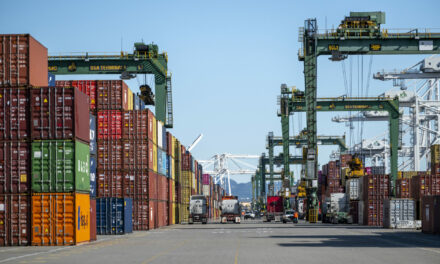“There’s a pattern language to permaculture…that has to do with observation. And no one does better observation than the people that live in that community.”
A new garden next to the First Missionary Baptist Church in Marin City is breaking ground: a climate friendly landscaping redesign to host an array of native and African-heritage drought resistant plants. The first of many community-led and designed projects to come, the garden represents a collaborative strategy driven by the residents for the residents – a People’s Plan to create better solutions for some of the chronic environmental issues the city faces.
“This is our pilot project. Now we can move forward into other work to help mitigate some of the flooding issues,” says June Farmer, one of the steering committee members of the Marin City People’s Plan.
Marin City is a small city of about 3,000 residents just north of Sausalito. The city’s watershed is commonly referred to as “a bowl” due to its shape, which funnels stormwater runoff from the Golden Gate National Recreation Area into the residential areas of the city, causing issues with flooding and water stagnation. The lowest lying lands impacted most by extreme flooding events are a shopping center, surroundings, and some access roads adjacent to the 101 freeway – built on top of what used to be a coastal marsh.
Neighborhoods in Marin City were originally built as temporary settlements for predominantly Black workers in the ship building days of World War II. The historically underserved community has struggled with inadequate infrastructure, as a result of poor city planning and a lack of resources. Now, on the frontlines of extreme weather events, the community is finding their own ways to handle the climate forces of today.
The idea for the People’s Plan was sparked by the Resilient by Design Bay Area Challenge – a year-long challenge in which teams were tasked with coming up with ideas for how to adapt to sea level rise at nine different locations around the Bay. The team looking at Marin City focused on homegrown solutions.
“People are good at saying what they’re doing for Marin City, but they’re not doing what needs to be done for Marin City,” Farmer says.
The process enabled them to bring on-the-ground knowledge to the forefront of city planning, with the goal of empowering the community to combat specific problem areas that residents live with every day.
The garden uses a permaculture design to create a low-maintenance garden with an assortment of plants to slow stormwater runoff. Photo: June Farmer.
“Our premise was that communities are already resilient and designers in [their] own right,” says Pandora Thomas, a facilitator of the original Permaculture and Social Equity team (P+SET) of the design challenge. “[Our] role was, and is, to facilitate a community driven process, but also empower them to learn permaculture rooted in Indigenous principles.”
The Marin City People’s Plan is based on these principles of collaborative conversation between members of the community, the experts, and facilitators like the Urban Permaculture Institute – who have continued to host permaculture training programs to equip residents with better land-management skills. Thomas says the process by which sites, strategies and solutions are identified is always evolving; no one-size-fits-all approach is used to rebuild part of the community.
The First Missionary Baptist Church, which sits at the corner of Drake Ave and Pacheco Street, was one problem site identified.
Farmer points to the bottom of the church walls where the wood shows signs of splintering and decay.
“This culvert here catches the rain from the top,” Farmer says. “See that debris right there? What happens is, the debris blocks up the grid, the water hits the grid, and overflows and hits the church. The sandbags are there to slow the water, but it’s obviously not working.”
The culvert is severely undersized, funneling water toward the church instead of through the storm drainage system.
While the People’s Plan is working on developing a system to divert this water around the church, the garden installation, which sits next to church and higher up the street, serves as the first small-scale project to slow the water during flooding events.
Farmer explains how the yard is divided up into two plots: native plants are on the left-hand side of the yard, and the African-heritage plants are on the right.
“A rain garden” is the term she uses to refer to this a more sustainable and less erosive form of gardening.
“When the water comes down the hill it’ll stop in the gardens,” she says, acknowledging that the new green infrastructure can’t stop the flooding entirely but is a good first step. “Slow it, spread it, sink it, is what we say.”
Church on low-lying land vulnerable to flooding. Photo: June Farmer.
Off to the side sit two 2,500-gallon tanks for rainwater capture and one 500-gallon storm surge tank. The latter is intended to slow the water from extreme rain events and then trickle it onto the land by gravity.
Although the pandemic delayed aspects of the project, the People’s Plan were still able to organize and hire members from the community to be “paid stewards” to complete the build-out alongside experts from the general contractor, Dig Cooperative. Over the course of two weeks, community members got to learn how these systems worked – removing the original lawn, planting drought tolerant plants, and installing the rain capture systems.
“The planting was probably the most fun for me,” says Jordan Smith, one of the paid stewards. “It was interesting to find out that, while [the plants] look nice, they also serve a purpose. Learning the details on which plants use the water best was the most interesting for me.”
Mano Tondre from Dig Cooperative, which specializes in green building and on-site water capture, explains that the garden was designed to meet the needs of the surrounding environment and the people who would be taking care of it.
“There’s a pattern language to permaculture, and there are certain principles that we follow,” Tondre says. “Much of that has to do with observation. And no one does better observation than the people that live in that community.”






